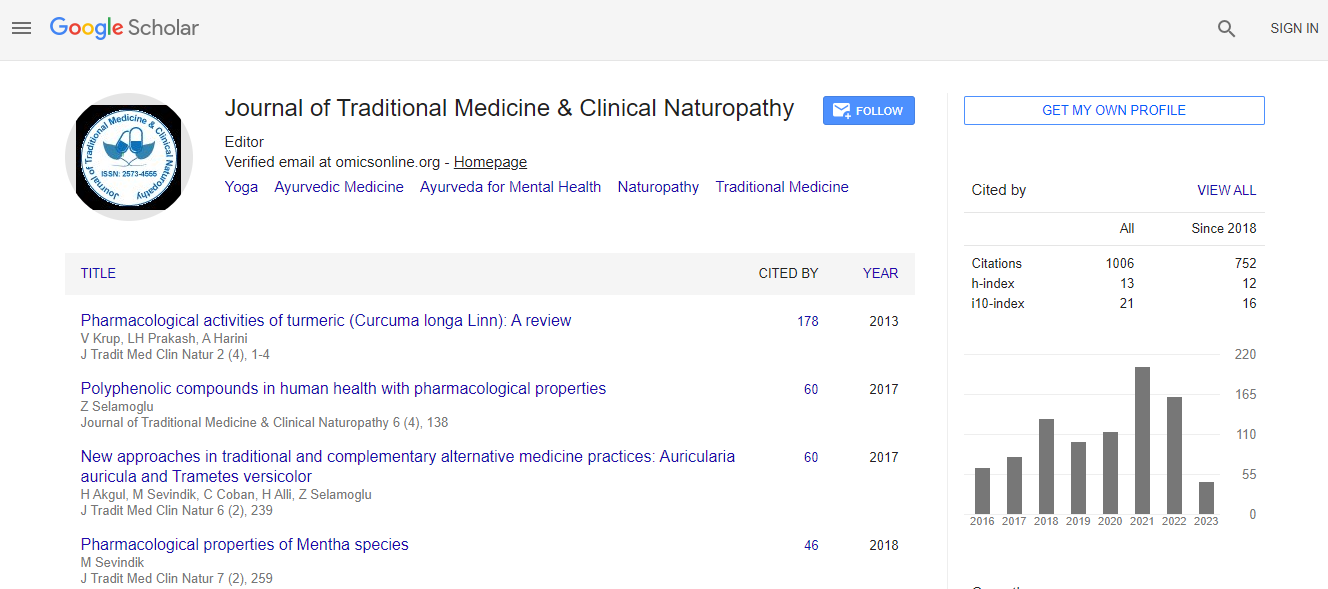Our Group organises 3000+ Global Conferenceseries Events every year across USA, Europe & Asia with support from 1000 more scientific Societies and Publishes 700+ Open Access Journals which contains over 50000 eminent personalities, reputed scientists as editorial board members.
Open Access Journals gaining more Readers and Citations
700 Journals and 15,000,000 Readers Each Journal is getting 25,000+ Readers
Google Scholar citation report
Citations : 1504
Journal of Traditional Medicine & Clinical Naturopathy peer review process verified at publons
Indexed In
- CAS Source Index (CASSI)
- Google Scholar
- Sherpa Romeo
- Open J Gate
- Genamics JournalSeek
- RefSeek
- Directory of Research Journal Indexing (DRJI)
- Hamdard University
- EBSCO A-Z
- Publons
- Geneva Foundation for Medical Education and Research
- Euro Pub
- ICMJE
Useful Links
Recommended Journals
Related Subjects
Share This Page
Association of MRI-defined lumbar paraspinal muscle mass and slip percentage in degenerative and isthmic spondylolisthesis
Joint Event on Global Summit on Traditional & Restorative Medicine & 10th World Congress on Neuropharmacology
Ye-Ji Yoon
Kyung Hee University,Republic of Korea
Posters & Accepted Abstracts: J Tradit Med Clin Natur
Abstract
The objective of this study was to investigate the role of lumbar paraspinal muscles (PSMs) in the progression of different types of spondylolisthesis by examining the correlation between lumbar PSM cross-sectional area (CSA) and slip percentage (SP) in degenerative spondylolisthesis (DS) and isthmic spondylolisthesis (IS). A multicenter retrospective analysis was carried out including 219 subjects diagnosed with lumbar spondylolisthesis. The DS group had 125 subjects and the IS group had 94 subjects. Using T2-weighted axial MRI images, CSAs of the psoas major (PM), multifidus (MU), and erector spinae (ES) were measured and divided by L5 vertebral body (VB) CSA to eliminate biases arising from the physical build of subjects. SP was measured using sagittal T2 weighted images. Correlations between muscle CSA ratio and SP were calculated in each group. Regression analysis was performed to predict the influence of each muscle CSA/VB CSA ratio on SP. No significant correlation was found in the DS group between any of the muscle CSA ratios and SP. Both PM/VB ratio (r=-0.24, p=0.021) and MU/VB ratio (r=-0.26, p=0.012) were negatively correlated with SP in the IS group. MU had more influence on SP than PM in the IS group (regression coefficient MU/VB: -8.08, PM/VB: -4.34). Both PM and MU muscle CSA ratios were negatively correlated with SP in the isthmic group. MU had more influence on SP than PM. No muscles had any correlations with SP in the degenerative group. This discrepancy between the two groups suggests exercise programs or interventions intended to prevent progression of IS and DS should be distinguished in clinical practice.Biography
Ye-Ji Yoon has graduated Kyung Hee University College of Korean Medicine and is in Residency training at Kyung Hee University Hospital at Gangdong, Department of Korean Rehabilitation Medicine.
E-mail: rritayy@gmail.com

 Spanish
Spanish  Chinese
Chinese  Russian
Russian  German
German  French
French  Japanese
Japanese  Portuguese
Portuguese  Hindi
Hindi 
